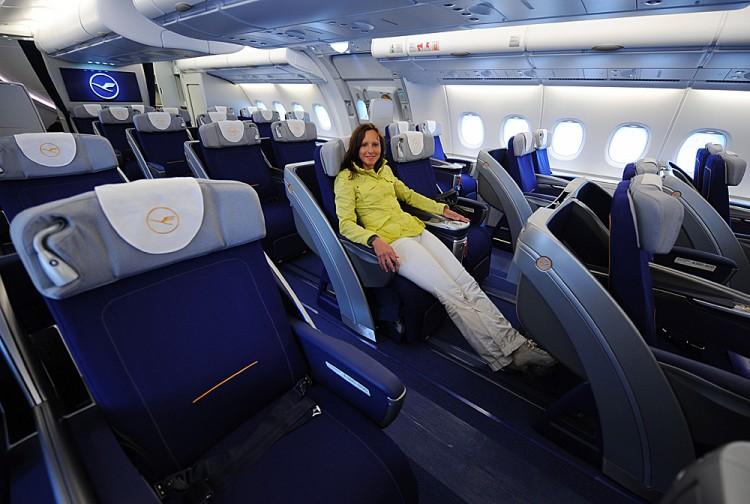
Dont we wish all airplane seats were this comfortable? A young woman poses in a business class seat of the new airplane Airbus A380 of the German airline Lufthansa after the test landing at the Franz-Josef-Strauss airport in Munich on June 2, 2010. Christof Stache/AFP/Getty Images
I don’t want to sound spoiled, but years ago I took a flight on a foreign airline in business class, and you would have thought that we were flying in the belly of the plane with the luggage. The seats were so mushy that there was no lower back support. The seat didn’t really recline at all, which is a perk you come to expect.





